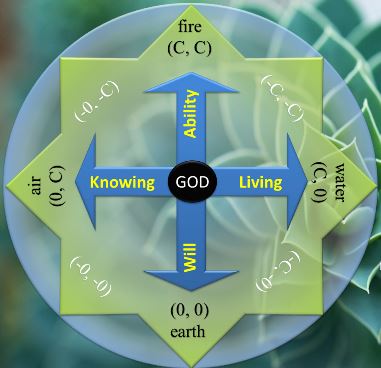Solving the Problem of Dark Energy According to the Duality of Time Theory
The following article is extracted from Chapter III of the Duality of Time book, and some of the details are discussed further in other chapters, as well as Volume III that is the Ultimate Symmetry.
Please also check the related problems of Dark Matter and Cosmological Constant.
 As we have introduced in section 6.5, observations of distant Type Ia supernovae, and the data from the cosmic microwave background (CMB) and large galaxy redshift surveys, all show that the expansion rate of the Universe has been accelerating it was about half its present age. To explain this acceleration, General Relativity requires that much of the energy in the Universe consists of a component with large negative pressure. This energy is called dark because it does not cluster in the usual way.
As we have introduced in section 6.5, observations of distant Type Ia supernovae, and the data from the cosmic microwave background (CMB) and large galaxy redshift surveys, all show that the expansion rate of the Universe has been accelerating it was about half its present age. To explain this acceleration, General Relativity requires that much of the energy in the Universe consists of a component with large negative pressure. This energy is called dark because it does not cluster in the usual way.
Negative pressure is believed to be a property of vacuum energy, but the exact nature and existence of dark energy remains one of the great mysteries of the Big Bang. Results from the WMAP team in 2008 are in accordance with a Universe that consists of 73% dark energy, 23% dark matter, 4.6% regular matter and less than 1% neutrinos.
Most suggestions explain the dark energy to be in the form of quintessence, which is related to the cosmological constant problem that we shall discuss in section 9.21. As we mentioned in section 9.19, the Duality of Time suggest that this energy come from the (0, c) space-time structure that is the complementary part of the normal physical particles. When these two complementary realms meet, they form together absolute symmetrical space, without any matter clustering. This means that (0, c) is balancing the effect of gravity of normal matter, but this will be discussed further in chapter VII.
List of Some Major Problems Solved by the Duality of Time Theory
In the following articles, we will list some of the major unsolved problems in theoretical physics and describe them in brief, stating their potential solutions according to the Duality of Time Postulate. Although many of these problems will be simply eliminated according to the new genuinely-complex time-time geometry, a detailed theoretical and mathematical analysis is required in order to explain how these problems are settled. Therefore, some of the following brief suggested solutions may be speculative.
These articles are extracted from Chapter III of the Duality of Time book, and some of the details are discussed further in other chapters, as well as Volume III that is the Ultimate Symmetry. A more concise description is also published in Time Chest.
The Duality of Time Postulate
To understand how all these major problems could be solved so easily, please study first the Duality of Time Postulate, that has been extracted from Chapter V of the Duality of Time book.

Solving the Arr...
Solving the Maj...
Selected Favori...
Published Books...
Arabic Articles...
Curriculum Vita...
Welcome to my W...

